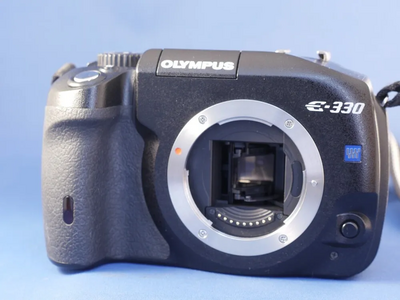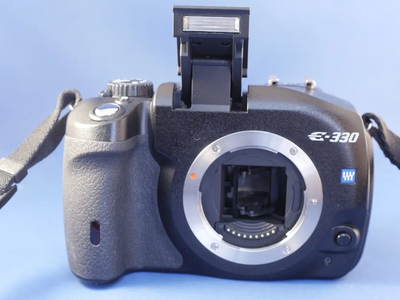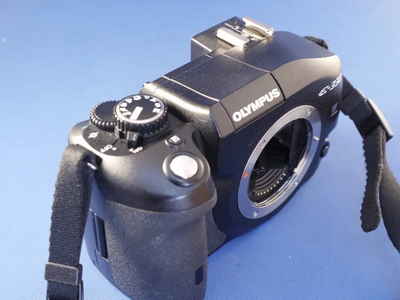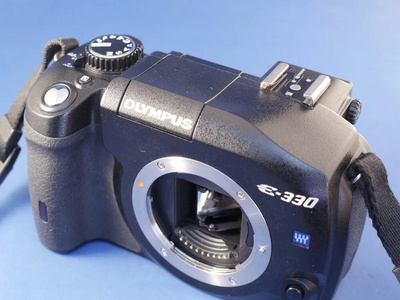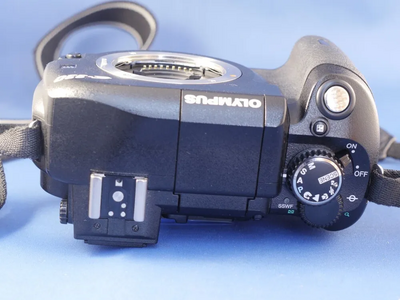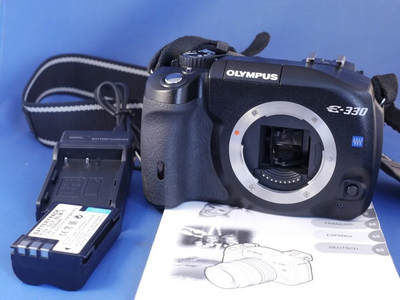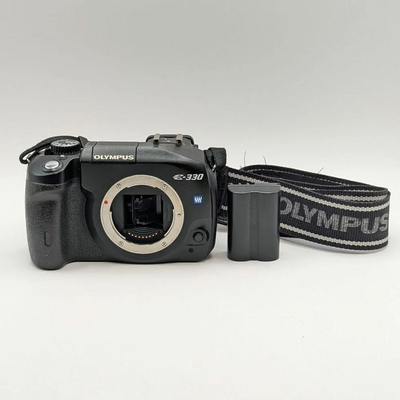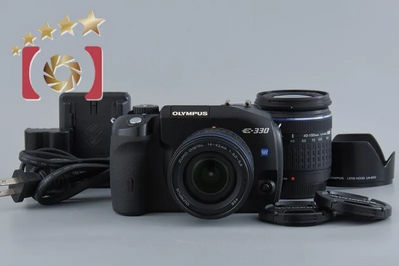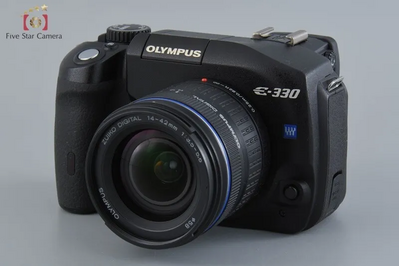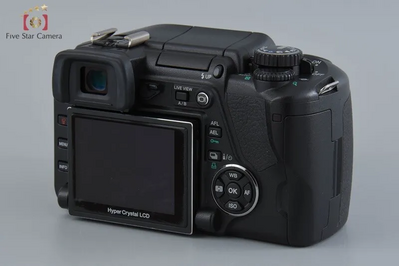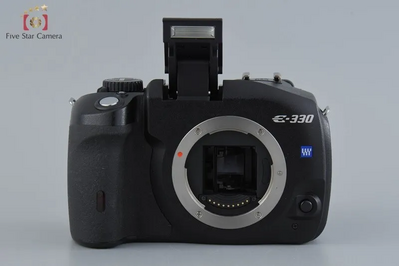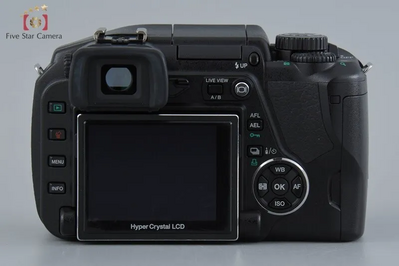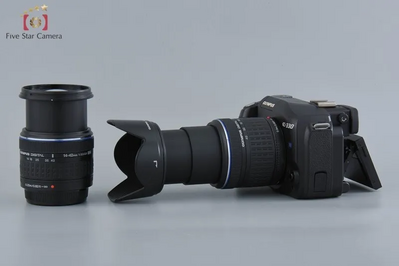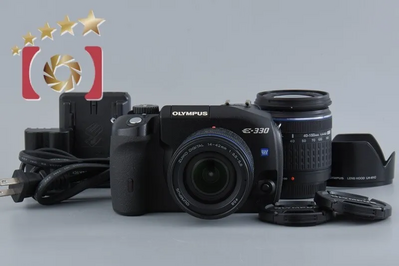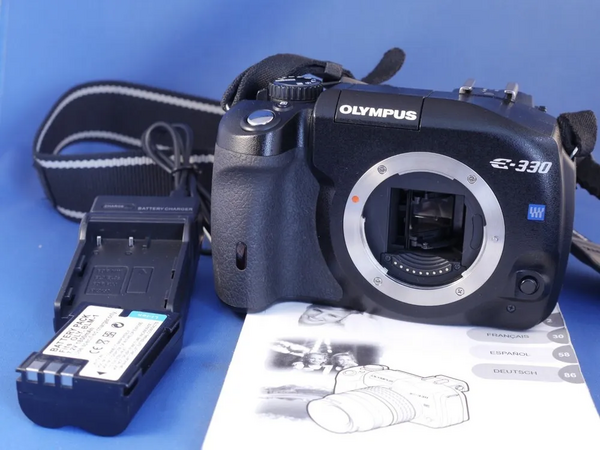
Olympus E-330
| Brand | Olympus 2006 |
| Model | E-330 |
| Released Year | 2006 |
| Type | DSLR Cameras |
| Series | E |
| Color |
|
| Status | Discontinued |
Quick view
Overview
The Olympus E-330 is a digital single-lens reflex (DSLR) camera released in 2006, featuring a 8-megapixel Live MOS sensor. It is notable for being the first DSLR to incorporate a Live View system with a flip-out LCD screen, allowing the user to preview shots in real-time through the LCD panel. The camera employs the Four Thirds System lens mount, providing compatibility with a range of Four Thirds lenses. It uses a Supersonic Wave Filter for sensor dust reduction to help maintain image quality. The E-330 supports interchangeable lenses, manual controls, and a built-in pop-up flash. The camera body includes dual card slots for CompactFlash and xD-Picture Card media types.
Specifications
| Non-Domestic Product | No |
| Series |
|
| Type | Digital SLR Camera |
| Maximum Resolution | 7.5 MP |
| Camera Technology | Digital |
| Model |
|
| Country/Region of Manufacture |
|
| Battery Type | Lithium-Ion |
| Modified Item | No |
| Sensor | 8 MP Live MOS Four Thirds |
| Lens Mount | Four Thirds |
| ISO Range | ISO 100-1600 |
| Viewfinder | Optical TTL with pentamirror |
| LCD Screen | 2.5-inch articulated TFT |
| Storage Media | CompactFlash Type I/II, xD-Picture Card |
| Battery | Li-ion rechargeable |
| Shutter Speed | 1/4000 to 30 seconds |
| Continuous Shooting | Approx. 2.5 frames per second |
| Screen Size | 2.5" |
| Color |
|
| Connectivity | USB |
| Features | Body Only |
| Colour | Black |
| Country | Japan |
| Category | Digital Camera |
| Included Items | Camera body only |
| Tested | Yes |
| Wear | Light wear, minor scratches |
Images
Key Advantages
The Olympus E-330's pioneering Live View capability was revolutionary, simplifying composition and focusing for users. Its fully articulated LCD screen improved flexibility in framing shots from various angles. The Four Thirds lens mount system offered a wide selection of high-quality lenses for creative freedom. The lightweight and compact design made the E-330 more portable than traditional DSLRs of that era. The advanced dust reduction system helped mitigate sensor dust problems common in DSLRs. Additionally, inclusion of multiple storage options increased usability for photographers.
Limitations
The 8-megapixel sensor resolution is modest by modern standards, limiting large print quality. The Live View implementation, although innovative, could be slower and less responsive than modern systems. Battery life was relatively limited compared to current DSLR models. The camera's autofocus system was considered slower and less accurate in low light. Video recording capabilities were absent, as it was released before widespread video in DSLRs. Ergonomics and menu systems may feel dated to contemporary users.
FAQ
What type of sensor does the Olympus E-330 have?
The Olympus E-330 features an 8-megapixel Live MOS Four Thirds sensor.
When was the Olympus E-330 released?
The Olympus E-330 was released in 2006.
Does the Olympus E-330 support Live View?
Yes, it was the first DSLR to feature a Live View system with a flip-out LCD screen.
What lens mount does the Olympus E-330 use?
It uses the Four Thirds System lens mount.
Can the Olympus E-330 record video?
No, the Olympus E-330 does not have video recording capabilities.
Is the Olympus E-330 still in production?
No, the Olympus E-330 was discontinued after its production run.
What storage media does the Olympus E-330 support?
It supports CompactFlash Type I/II and xD-Picture Card storage media.
Disclaimer
The content on is provided for general informational purposes only. We do not guarantee the accuracy, completeness, or reliability of any information, specifications, or visuals presented on the site.
is not responsible for any content, images, or data uploaded or shared by users. Users are solely responsible for the content they submit.
We may include links to third-party websites for convenience. We do not endorse or take responsibility for the content or policies of any external sites.
Use of the site is at your own risk. Always verify critical information independently before making decisions based on content from this website.

